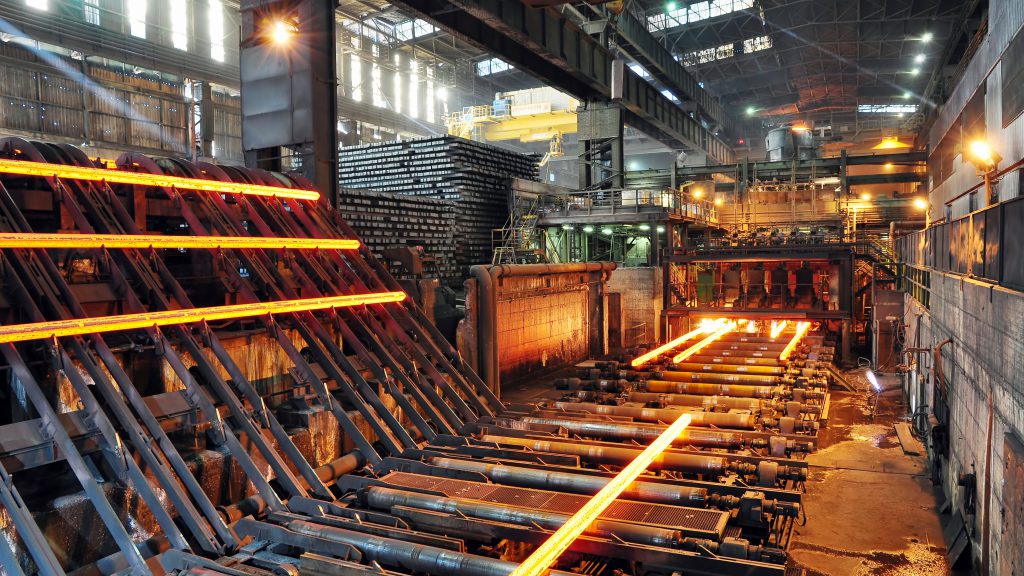
Amid volatility in most commodity markets, iron ore has been relatively stable over the past two months, despite a cloudy economic outlook for top importer China.
The price of benchmark 62% iron ore for delivery to north China, as assessed by commodity price reporting agency Argus, ended at $96.10 a tonne on Sept. 30, down 3% from the prior week’s close.
But the price has been in a range of $95 to $120 a tonne for the past three months, having settled after spiking as high as $160.30 in the weeks after Russia’s invasion of Ukraine on Feb. 24.
The spot price’s stability has persisted in recent weeks as perceptions of the state of the Chinese economy have shifted, varying from optimism amid expected stimulus measures from Beijing to pessimism over a problematic construction sector, the strict zero-covid policy, and the potential weakening of exports as the global economy cools rapidly.
China buys nearly 70% of seaborne iron ore volumes and accounts for about half of global steel output, making the state of its economy the key market determinant for iron ore.
Concern over China’s economic outlook was not dispelled by a modest bounce in the key Purchasing Managers’ Index (PMI) in September.
The widely watched manufacturing index climbed to 50.1 points, just above the 50-level that separates growth from contraction, and up from 49.4 in August.
But the outcome was largely viewed as soft, especially since most of the covid lockdowns had ended during the month and the authorities had ramped up efforts to stimulate the economy.
However, the key indicators for iron ore remain fairly positive, with imports holding up, port inventories slipping, and steel output is set to recover.

China is likely to have imported 87 million tonnes of seaborne iron ore in September, according to estimates from Refinitiv, while commodity consultants Kpler pegged arrivals at a higher 95.17 million tonnes.
The estimates don’t include overland imports from Russia and Mongolia and therefore tend to be lower than the official customs data, which will be released after the week-long Golden Week holidays that began on Oct. 1.
But it would appear likely that the official number will be around the same as the 96.21 million tonnes reported in August, which was the highest since January.
China’s port inventories of iron ore also declined in September, with data from consultants SteelHome showing they ended at 135.1 million tonnes in the week to Sept. 30, down from 143 million in the week to Sept. 2.
In prior years iron ore inventories have tended to rise in the third and fourth quarters as steel mills rebuild stocks following the period of peak steel demand during the construction season over the warmer months.
This suggests that steel producers may be active buyers in the coming months, especially if the emerging signs of stronger steel production continue.
China’s steel output rose 3% in August from a month earlier, reaching 83.87 million tonnes, for a daily figure of 2.71 million tonnes.
Official figures for September will only become available around mid-October, but anecdotal reports from industry sources suggest daily output may rise to close to 3 million tonnes a day.
The capacity utilization rate at steel blast furnaces in China have gained over the last eight weeks to reach 89.08% as of Sept. 23, the highest since June, according to data from consultancy Mysteel.
Steel rebar inventories monitored by SteelHome have also been dropping in recent months, sliding to 4.59 million tonnes in the week to Sept. 30.
While the typical seasonal pattern is for rebar stockpiles to drop during the construction season and then rebuild over the winter, it’s worth noting that they are currently 32.3% below the level that prevailed at this time last year.
This suggests that steel mills may well continue to operate at relatively high capacity in order to boost inventory levels.
Of course, much will depend on whether steel demand receives an actual boost from stimulus measures, and the upcoming congress of the ruling Communist Party on Oct. 16 may be key to setting market expectations.
But for now, iron ore is managing to steer a fairly straight course despite the headwinds and crosswinds being thrown about by both the Chinese and global economies.
(The opinions expressed here are those of the author, Clyde Russell, a columnist for Reuters.)
(Editing by Robert Birsel)
Comments